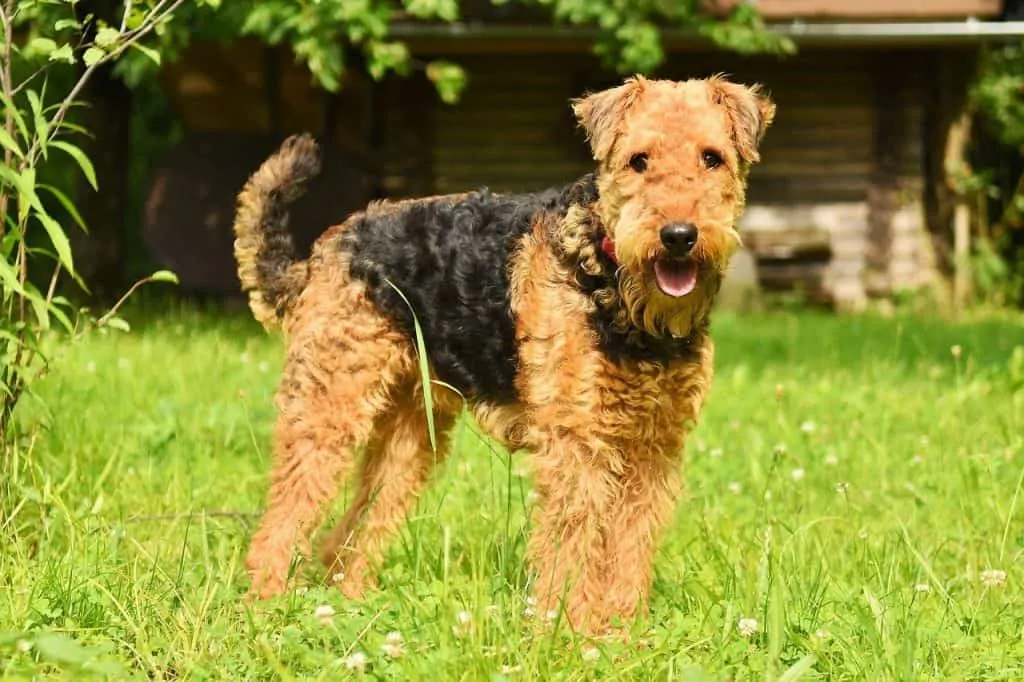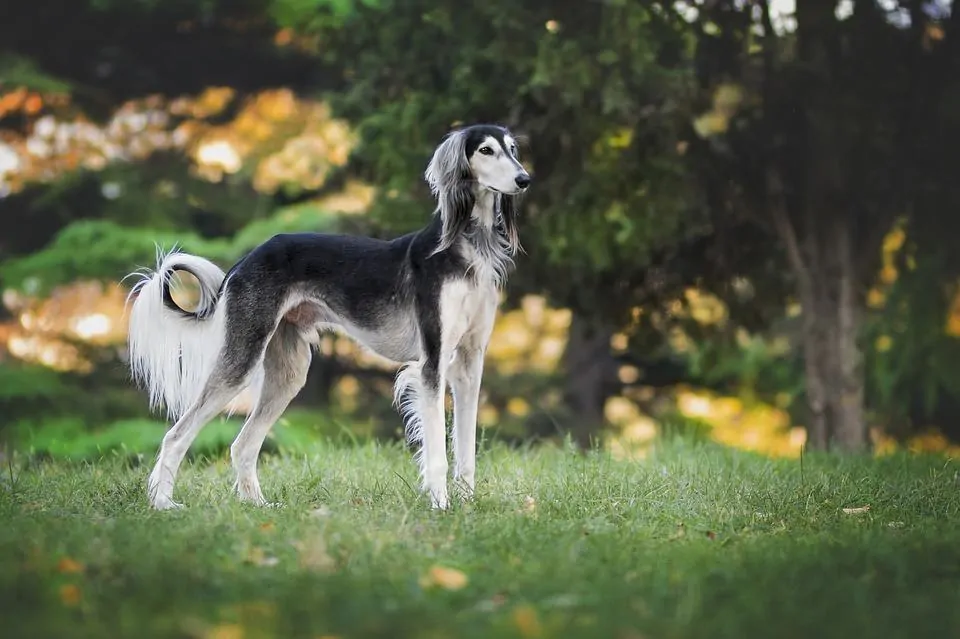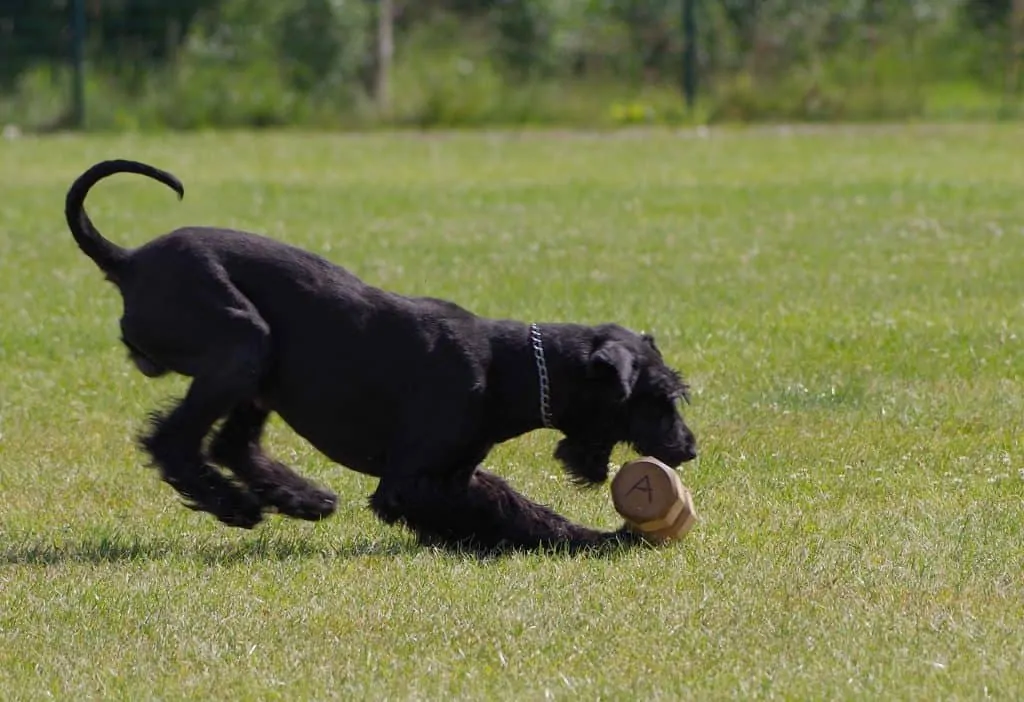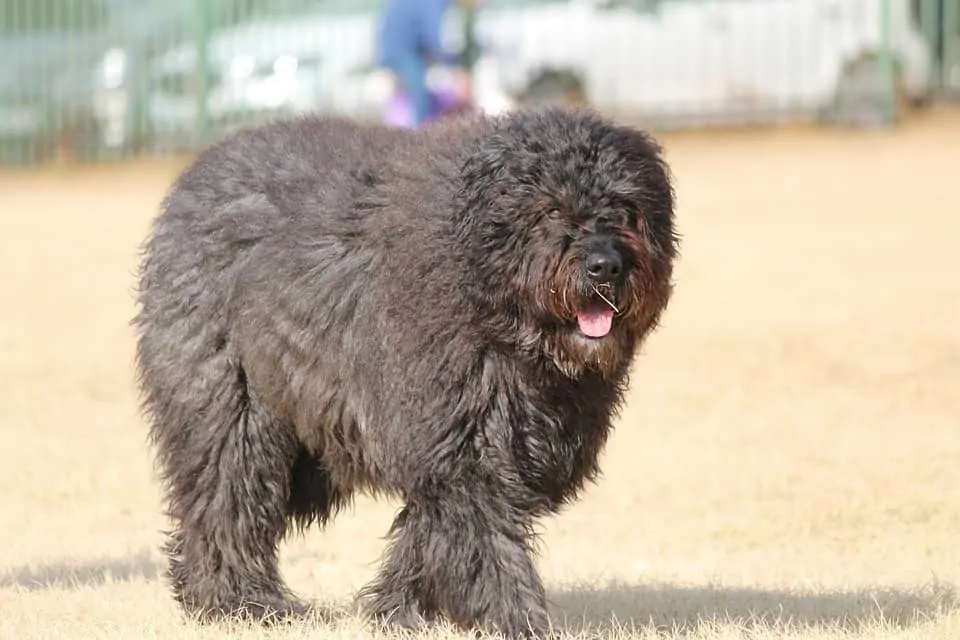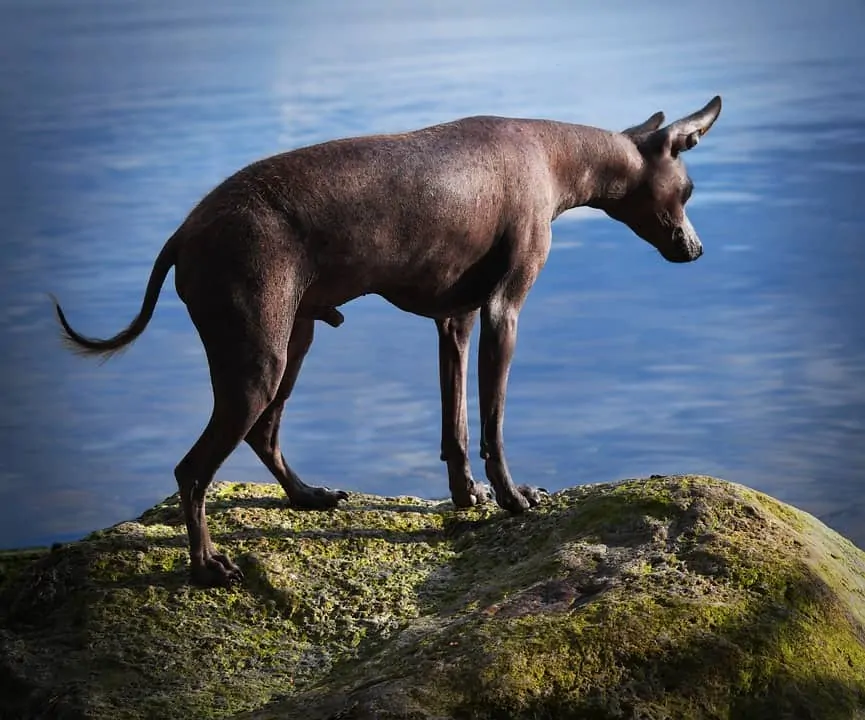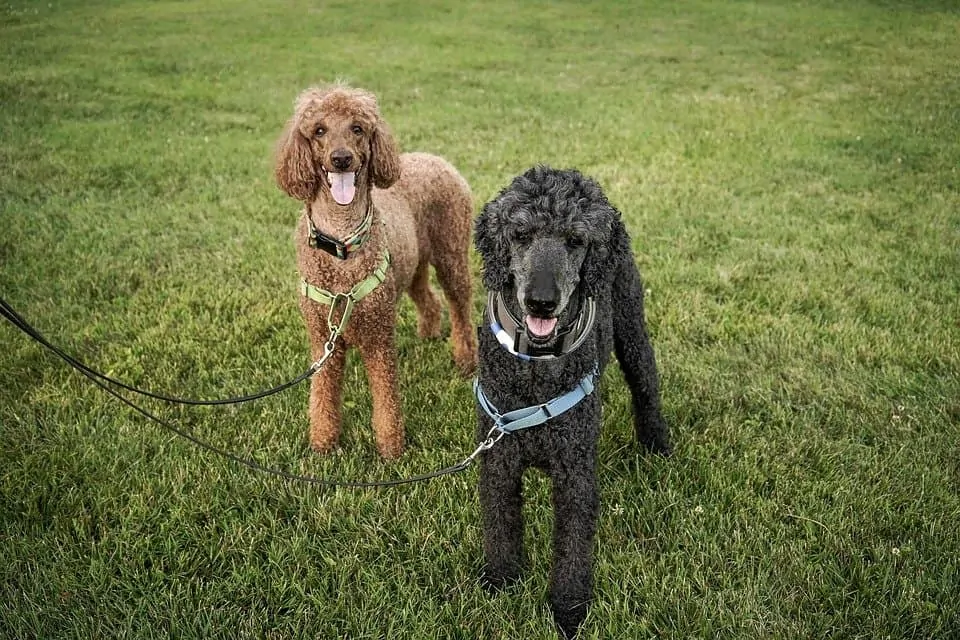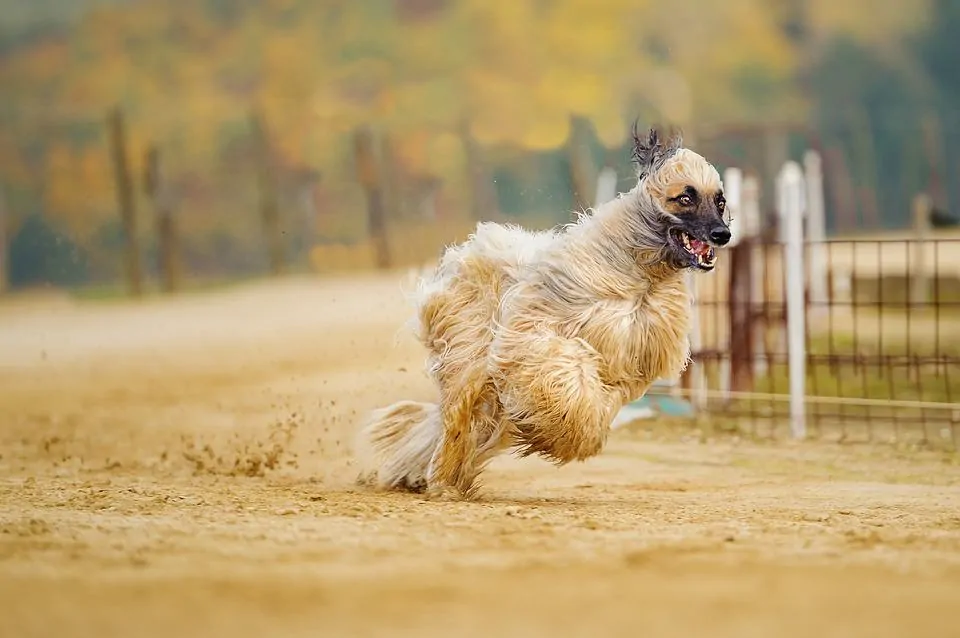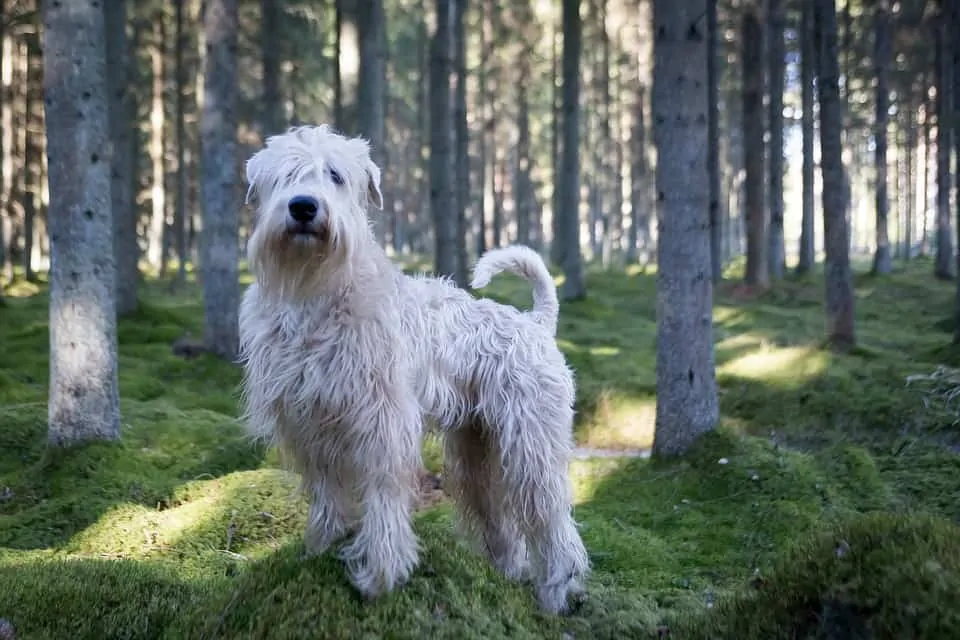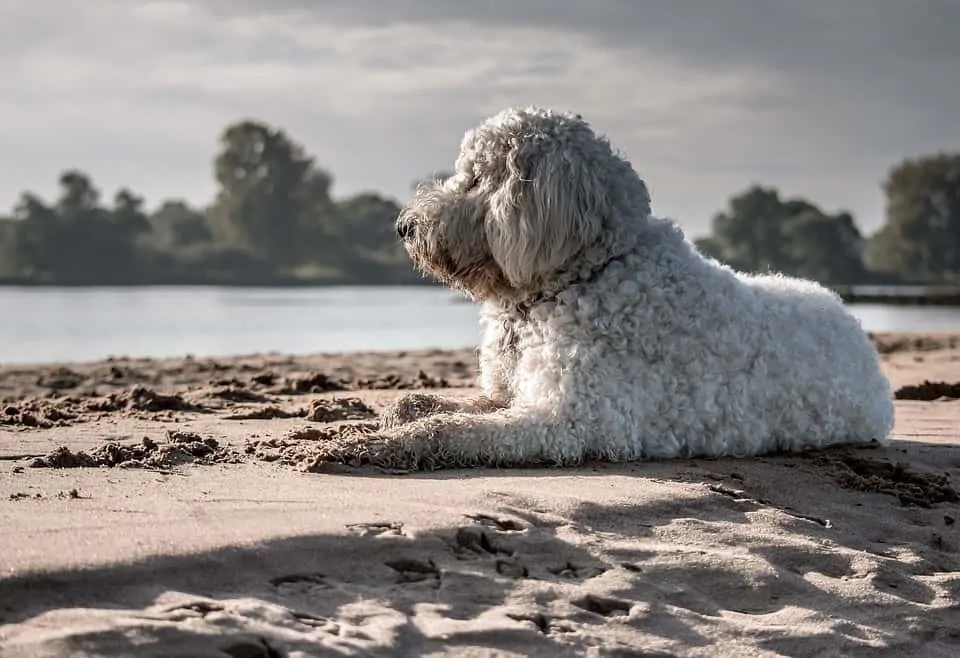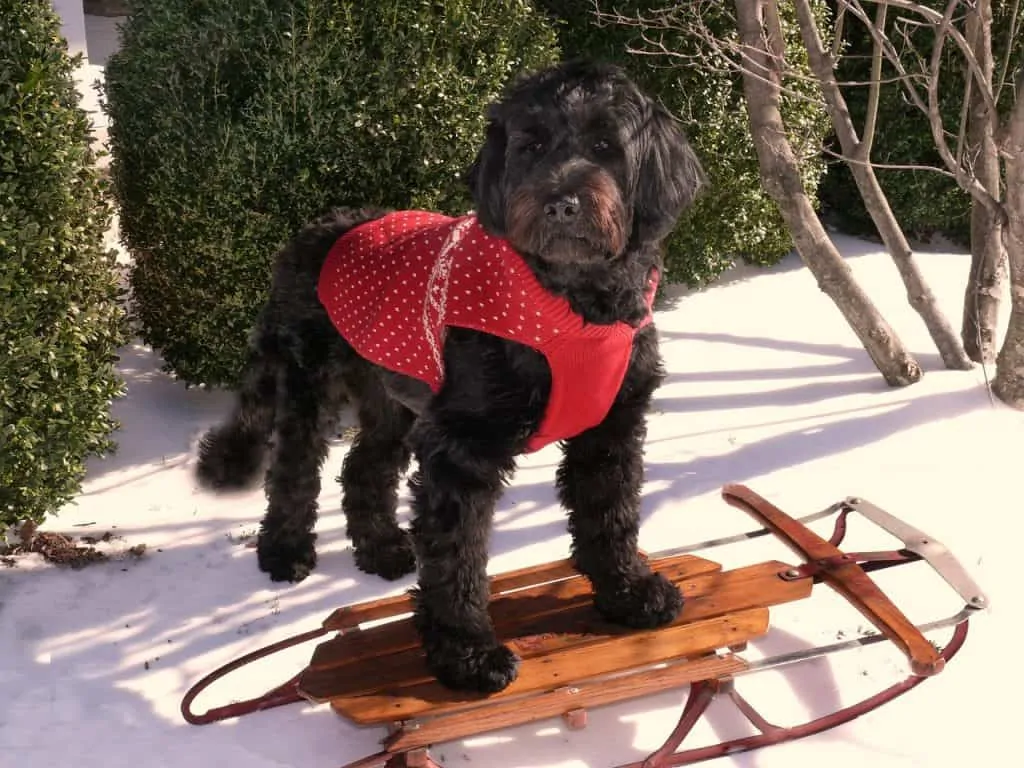There is a lot to love about big dogs (literally).
They have the power and stamina to keep up with active families. They offer a feeling of security that small dogs just can’t touch. And there is a lot more of them to snuggle!
But big dogs come with a lot of hair. And that can lead to a big mess.
If you want a big pooch but not the big mess that comes with cleaning up your floors after they blow their coat, then we have 14 big dog breeds you are going to love.
These big dogs don’t shed, or at least, not as much as your average pup. But they still offer all the great benefits of a larger canine companion.
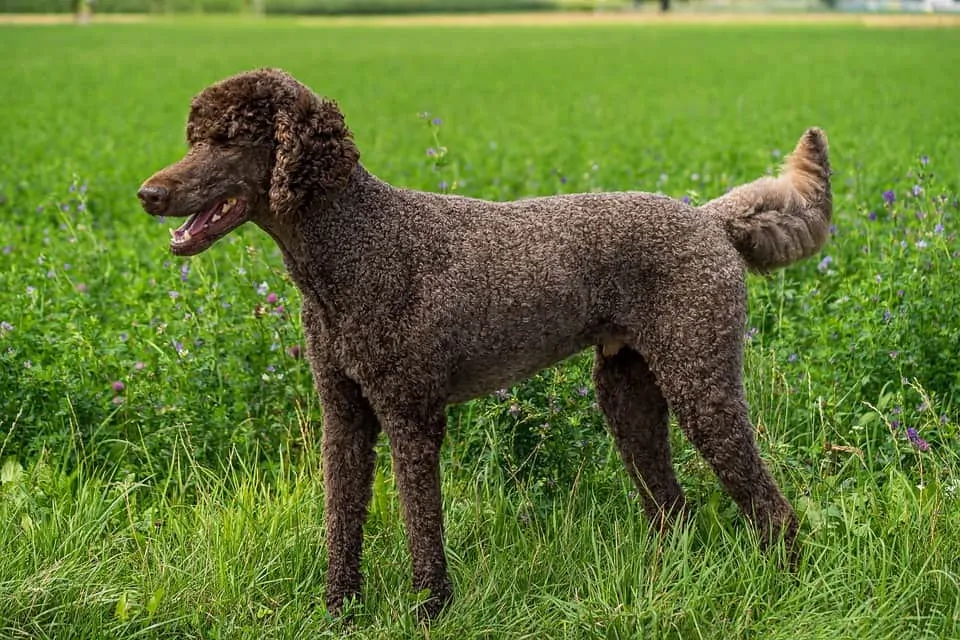
Contents
What Makes a Dog Non-Shedding?
Before we get into which breeds, specifically, offer all the cuddles with less of the hairy mess, it is important to understand what makes a dog non-shedding.
First off, if you are imagining a future with you coexisting happily with a pack of pups without a single hair on the floor, then you are living in a fantasy world. The truth is, all dogs shed. Some just do so less than others.
“Non-shedding” dogs lose very little hair on a day-to-day basis. Conversely, high-shedding dogs tend to drop hairs frequently and often have seasonal blow-outs that create super-powered dust bunnies that can quickly take over your house.
The reason for this difference has to do with the texture and length of each individual dogs’ hair.
Once a hair grows out fully–reaches its final length–then it dies off and is shed so a new hair can replace it.
Dogs with short coats have a lot of hairs reaching this final phase every day. Longer coats, on the other hand, take longer for each hair to reach this point and so less hair is dropped each day.
Curly hair will grow forever if you let it, which means these dogs shed individual hairs very rarely. The more tightly curled the coat, the less they shed.
Dogs with coarse coats (think terriers) also shed less frequently than dogs with similar length coats. That’s because these thick, hard hairs have longer lifespans than softer textured hair.
Big Dogs That Don’t Shed
While it is true that dogs with curly, long, or coarse coats are less likely to shed a lot, there are certain breeds that are well-known for shedding even less than normal for these hair types.
Here are 14 of our favorites!
Komondor
The Komondor’s coat is curly and soft when they are born and slowly begins to cord as they grow. The coat doesn’t achieve that tell-tale dreaded look until the dog reaches the age of two or three.
This corded dog from Hungary has one major advantage over other curly-coated breeds: their coat grows into tight dreadlocks that keep hair from falling to the ground. However, they do shed some as puppies before their coat cords into its mature form.
In their native country, these dogs are utilized as livestock and property guardians. They are steady and calm around the house but will react without fear if they feel their family is being threatened.
As with all guardian breeds, early socialization is key to raising a well-rounded Komondor. While they do not shed as adults, their coat does require significant care, especially as they mature.
Airedale
Coarse and wiry, this big dog’s coat has a very specific feel to it and can be groomed short or left shaggy.
These giant terriers have thick, coarse coats. While this means they don’t shed much, Airedales do require frequent hand stripping–a grooming technique meant to remove dead guard hairs and keep their coats healthy.
These dogs were originally bred as all-around utility dogs and have been used for everything from hunting to herding. In the home, they are loyal but rambunctious. They are known to be stubborn and independent and, like most terriers, have a strong prey drive.
Surviving the long puppyhood of this breed requires early training, consistency, and frequent exercise.
Wirehaired Pointing Griffon
The Wirehaired Griffon has a similar coat to that of most terrier breeds but with a noticeably softer undercoat. This combination does lead to some shedding, but it is noticeably reduced compared to most other breeds.
This capable gun dog has origins in both Germany and France and has been used throughout Europe to aid in pointing, flushing, and fetching fowl. In the home, the Griffon is intelligent and eager to please. They have softer temperaments than many other pointing breeds but still require frequent exercise.
This breed can be sensitive, so successful training requires a consistent but gentle hand. As long as they understand what is expected of them and are given the chance to figure it out, they typically do very well in a variety of situations.
Saluki
The gorgeous Saluki is more tall than big. Their silky, short coat is unique in its tendency to stay in place. It’s just one more thing to love about this beautiful and elegant canine.
The Saluki is a contradiction to the typical rule that short-coated breeds are heavy shedders. The silky, thin coat of this dog does not go through seasonal sheds and individual hairs drop infrequently, making them an excellent choice for owners looking for a low-shedding dog that also requires minimal grooming.
These ancient dogs hail from the fertile crescent of the Middle East and have been used as coursing hounds for millennia. They are highly instinct-driven animals and are not known for their independent intelligence. Still, they can make wonderful companions for the right family.
So long as they are given opportunities to stretch their legs, they are generally happy to spend most of their time relaxing on the couch. They make excellent cuddlers but their overall temperament is more cat-like than dog-like.
Giant Schnauzer
This, the biggest of the Schnauzers, has a coat similar to most terriers. It is coarse, dense, and rarely falls out.
With the typical coarse terrier coat, the Giant Schnauzer is widely known as a low-shedding breed. They do require coat maintenance, however, which generally consists of frequent brushing and trimming.
Like all Schnauzers, these big dogs hail from Germany. They were originally bred to guard and drive livestock but picked up a new occupation as property guardians near the turn of the previous century.
In the home, these big dogs are quiet until the situation calls for them to step into action. They can become aggressive if the situation warrants it, but they are typically mild-mannered and trustworthy with children. They are highly intelligent and can become bored without enough stimulation.
Bouvier des Flanders
If left untamed, the fluffy coat of a big Bouvier can quickly take on the look of an unsheared sheep. This may have helped them blend in back when they were used as livestock guardians, but keeping such a long coat healthy requires frequent brushing and care.
The Bouvier has a coat that is part coarse, part curl. This combination makes for a breed that sheds quite a bit less than other dogs. The hair they do lose is often caught in their thick coats, which means these dogs do require frequent brushing to avoid matting.
This giant dog from Belgian was originally bred to be a working dog in the monasteries. They were responsible for herding, guarding, and pulling carts, among other tasks. They are strong and dedicated dogs and are particularly hearty in harsh climates.
In the home, the Bouvier is gentle and loyal with their family but quick to aggression if they feel their people are being threatened. They are well-known for their intelligence and ability to control themselves. But this giant dog still requires training and consistency to become a reliable companion.
Xoloitzcuintli
No hair? No problem! While the bald varieties of the Mexican Hairless do technically have some hair, they rarely shed it.
The only dogs that truly don’t shed are those that have no hair. The Xoloitzcuintli is as close to a completely hairless big breed as you can get. Even the haired variety, which accounts for about one-quarter of all puppies born, are low shedding compared to other breeds.
The Xolo is an ancient breed that existed alongside the Aztecs and Mayans in ancient Mexico. They were revered for their healing warmth and association with the god of the afterlife, Xolotl. Their use as healing and companion animals throughout history has produced a modern dog that is said to be emotionally perceptive and incredibly protective of their family.
In the home, these rare dogs are quiet, loyal, and laid back. They can bark–quite loudly, in fact–but this is usually reserved for trespassers and wild animals. They can be aloof with strangers but tend to warm up if given enough time.
Standard Poodle
Like their smaller cousins, this big Poodle’s curly coat comes in a variety of colors from solid black, red, and white, to coats mottled with white marks known as party coloring.
This big Poodle’s tightly curled coat means this breed rarely drops hairs. If left unchecked, their coat would continue to grow until it turned into one giant mat. For this reason, frequent grooming and trimming is a must.
Poodle-type dogs were common in Europe for centuries before dog shows became a popular pastime. The history of this breed is lost somewhere in that popularity with both France and Germany claiming to have first bred the curly-coated pooch. Most likely, the Standard Poodle descends from water dogs common to the southern coast but may also have some hunting breed blood in their lines.
In the home, the Poodle is a highly intelligent and loyal friend. They are energetic and sociable and typically do well with people and dogs of all types. Their intelligence and athleticism make them perfect candidates for a variety of dog sports and as working and service animals.
Irish Water Spaniel
Like the Poodle, the Irish Water Spaniel has a tightly curled coat that rarely sheds and that keeps hairs from falling to the ground when they do fall out. They need frequent grooming and brushing to keep from matting.
This big Spaniel was used across Ireland as a hunting companion. Like Labradors, they were celebrated for their love of water and for retrieving fowl in marshy conditions. Their breeding history is not well known, though they likely descended from the Poodle, Portuguese Water Dog, and a variety of spaniels common to the area.
In the home, the Irish Water Spaniel is laid back, good with children, and loyal. They can be aggressive barkers with intruders but rarely act on that aggression. While they enjoy their couch time, regular exercise is important for avoiding unwanted behaviors and to keep them physically fit.
Afghan Hound
These big sighthounds have a lot of hair, but thanks to its unique makeup, it tends to stay on their bodies longer than coats of similar length on other breeds.
Like the Saluki, the Afghan has a unique silky coat that rarely sheds. Their hair is longer and denser than their thin coated cousins and requires more frequent brushing to keep it looking its best.
The Afghan Hound was first bred from ancient sighthounds in the mountains of Afghanistan. These dogs needed thicker coats to combat the ruthless climate but that still allowed for free, quick movements. They are revered by the Afghan people and are one of few dog breeds that are seen as clean enough to enter the home.
In the modern home, these dogs are known as couch potatoes until something grabs their attention. If given the chance to run off-leash, they can reach impressive speeds and have surprising endurance. They are not the smartest breed, but with consistent training and the right owner, they make wonderful pets.
Wheaten Terriers
Somewhere between curly and terrier-like, the soft coat of this big terrier tends to stay put, making this a great breed for meticulous owners who like to keep their floors spotless.
The soft, fluffy hair of a Wheaten is more wavy than curly but sheds with infrequency, similar to the coat of a Poodle. Their hair will grow indefinitely and requires trimming to avoid matting.
This terrier’s original responsibilities went far beyond keeping the farm free of vermin. They were also expected to herd, guard, and watch over livestock. Their natural tenacity and willingness to please make them perfect for such a long list of tasks.
In the home, the Wheaten is an energetic dog that can quickly get itself into trouble if not given enough stimulation. They do best if given a job and are great candidates for doggy sports and trick training. They are known for their ability to alert their owners to an intruder but not their willingness to do anything about it.
Goldendoodle
Doodles can have long, curly hair like this big boy, straighter, longer hair, or even a short coat, depending on what they were mixed with and how much of their genes came from which parent.
In an attempt to create a big dog with the personality of a retriever and the low-shedding coat of a Poodle, breeders have created a number of crossbreeds with varying levels of shedding. The Goldendoodle and the Labradoodle are the most common.
Both types of dogs retain much of their retriever personality but with an added dose of Poodle energy and tendency toward mischief. As far as their coats, shedding potential varies from litter to litter with some dogs shedding very little and others shedding almost as frequently as their double-coated parent.
Regardless of how much they shed, these dogs can make good pets. They are loyal, intelligent, and unendingly playful. They do have a lot of energy and tend to mature late. Early training and a lot of time spent on walks and at the dog park are a must to survive those early years with these energetic pups.
Portuguese Water Dog
When cut short, the coat of these big water dogs tends to look soft and fluffy, but when allowed to grow out, it typically develops a nice wide curl unique to this breed.
The Portuguese Water Dog has a loosely curled coat that will grow without end and requires frequent trimming and brushing to keep in top condition.
These water dogs were originally bred in Portugal to aid fishermen in retrieving nets and gear. They were even taught to herd fish into nets and transport messages between ships and shore. Their loyalty, intelligence, and love of the water made them perfectly suited for such tasks.
In the home, the Portuguese Water Dog is loyal and friendly. They enjoy getting loved-on and won’t hesitate to ask a stranger to give them pets. They can be rambunctious as pups but mature nicely if given the guidance and outlets they need.
Black Russian Terrier
The rare Black Russian Terrier possesses a coat similar to the Giant Schnauzer–a breed that contributed heavily to their makeup. The coarse, long, wavy coat will grow indefinitely and requires the occasional trim and light brushing to keep it looking beautiful.
This big dog was bred in Russia as a military canine. They were distributed throughout Europe during World War II as the Red Army moved onto the continent. Today, however, they are fairly rare.
Despite their original use as an aggressive working dog, the Black Russian can make a good family companion with the right training and socialization. They are a large and powerful breed but can learn patience and obedience if given consistent rules. They are highly intelligent, confident, and calm.

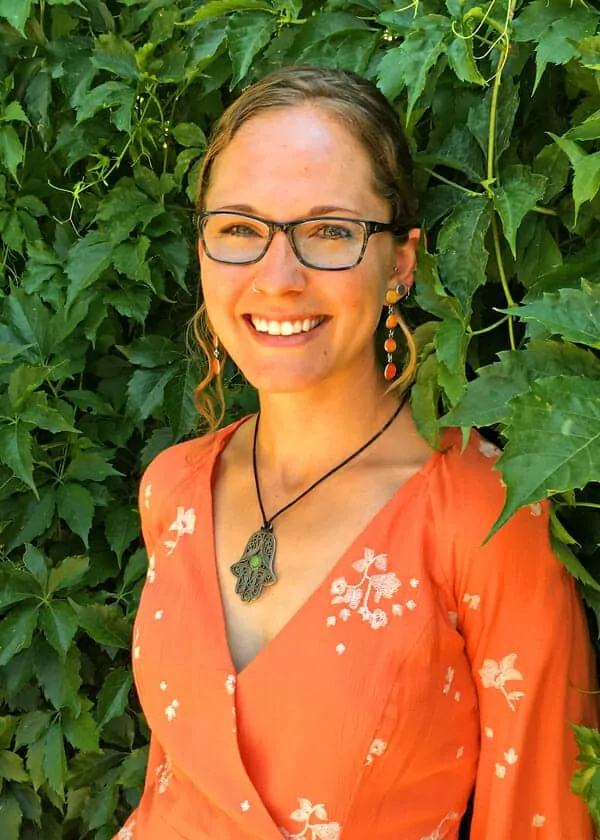
Sara Seitz has spent most of her life in the pet industry and has a bachelors in animal behavior from Colorado State University. Sara started working with dogs and cats as a high schooler at a rural boarding kennel. There she learned a lot about the bad and the ugly of the pet service industry. But not even the toughest day at that job would dissuade Sara from following her dream of working with animals.
In college, Sara got a job at a dog daycare and boarding facility in Fort Collins, Colorado. Her new career provided even more opportunities for learning about dog behavior than her classes did. As general manager of the daycare, Sara helped the company launch a new in-home pet sitting branch and trained to become a certified dog trainer. Between shifts taking care of peoples pets in-home and supervising dogs during playtime at the daycare, Sara organized and taught obedience classes.
Sara has always been passionate about bettering the lives of our canine companions. She soon found that advocating for and educating owners in the power of positive reinforcement training was one of the best ways to help dogs and their owners live happier lives.

